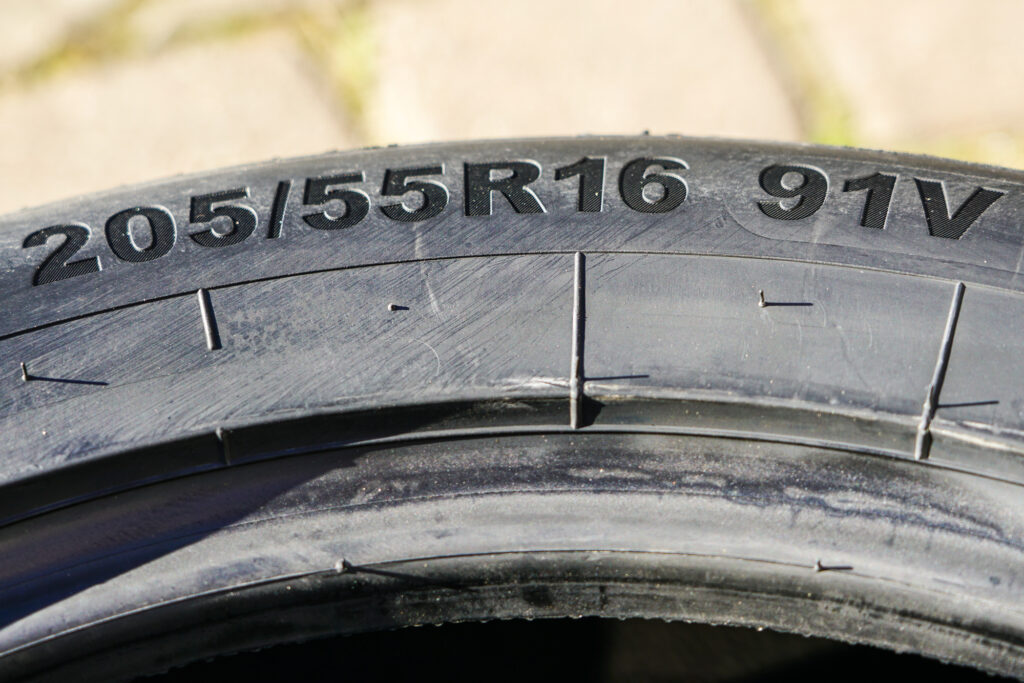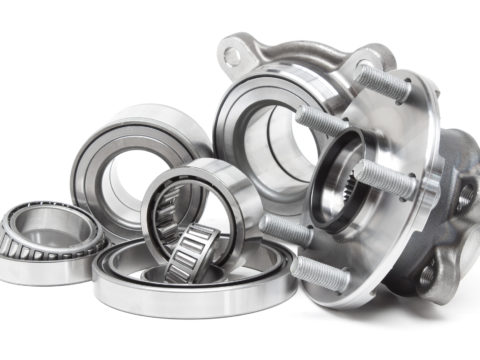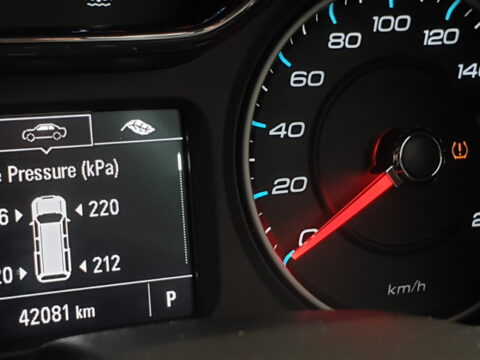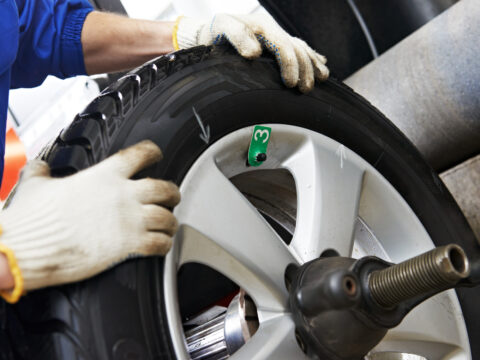Tires come in a wide variety of sizes, treads, and ratings. Therefore, understanding tire specifications is critical to get the correct tires for your car.
For example, you might wonder, “What does 116T mean on a tire?” This article answers that question and many others so you can decipher tire ratings.

Contents
The Tire Load Index and Speed Rating System Explained
The tire load index and speed rating system helps communicate the tire designs. The load index specifies how much weight the tire can handle, while the speed rating tells us how fast the tires can go.
For example, if you’re wondering, “What does 116T mean on a tire?” it signifies that the load index is 116 and can handle 2,756 pounds, while the T indicates a speed rating of 118 mph.
The load index is a numerical value. The higher the number, the more weight the tire can handle. Here is a summarized table of load index, but ratings exist between these index numbers too:
| Load Index | Load (lbs) |
| 0 | 99 |
| 5 | 114 |
| 10 | 132 |
| 15 | 152 |
| 20 | 176 |
| 25 | 204 |
| 30 | 234 |
| 35 | 267 |
| 40 | 309 |
| 45 | 364 |
| 50 | 419 |
| 55 | 481 |
| 60 | 551 |
| 65 | 639 |
| 70 | 739 |
| 75 | 852 |
| 80 | 992 |
| 85 | 1135 |
| 90 | 1323 |
| 95 | 1521 |
| 100 | 1764 |
| 105 | 2039 |
| 110 | 2337 |
| 115 | 2679 |
| 120 | 3086 |
| 125 | 3638 |
| 130 | 4189 |
| 135 | 4806 |
| 140 | 5512 |
| 145 | 6393 |
| 150 | 7385 |
The speed index is usually a numeric symbol but can include letters too. For example, here is a list of the speed index with the maximum speeds that correspond to each index rating:
| Symbol | Speed (mph) |
| A1 | 3 |
| A2 | 6 |
| A3 | 9 |
| A4 | 12 |
| A5 | 16 |
| A6 | 19 |
| A8 | 25 |
| B | 31 |
| C | 37 |
| D | 40 |
| E | 43 |
| F | 50 |
| G | 56 |
| J | 62 |
| K | 68 |
| L | 75 |
| M | 81 |
| N | 87 |
| P | 94 |
| Q | 100 |
| R | 106 |
| S | 112 |
| T | 118 |
| U | 124 |
| H | 130 |
| V | 149 |
| W | 168 |
| Y | 186 |
What Does the T or H Mean on Tires?
The letters that are part of the speed rating provide a specific speed that the tires are safe to use. This rating doesn’t mean that the speeds are safe for the roads or legally allowed, but only specifies the maximum speed.
If you see a T in the tire’s speed rating, that means the tire can go up to 118 mph. There aren’t many roads where it is legal to go this fast, but if you can right the right spot, tires with a T speed rating can go up to 118 mph.
Tires with an H speed rating can go extremely fast. The manufacturer of H-rated tires made them handle speeds of 130 mph. But just because your tires can go this fast, your car might not be able to.
Generally speaking, the closer the rating is to the beginning of the alphabet, the lower the speed rating. The speed rating increases as you reach the end of the alphabet.

What Does a Load Index of 116 Mean?
The load index is a rating for how much weight each tire can handle. The load index is per tire. So if your car has four tires, you can multiply the load index by four to get the total weight the tires can safely handle.
If you see a load index of 116, it means that each tire can handle 2,756 pounds. So the total load of a car with four tires is approximately 11,024 pounds.
It’s worth noting that most vehicles do not have an even distribution of weight. This fact is especially true if you place heavy cargo loads over one axle, which is a regular occurrence on trucks and large vans.
What the Other Numbers and Letters on a Tire Mean
If you inspect a tire, you’ll find many numbers and letters beside the speed and load ratings. One of the most important is a three-number combination that indicates the tire size and shape.
An example is a 275/70R17 tire size. In this case, the 275 references the tire width in millimeters, the 70 signifies the aspect ratio, and 17 indicates the size of the wheel’s rim. The R indicates that the tire uses radial construction.
Another critical number found on tires is the cold PSI rating. This rating is the maximum tire pressure that is safe to use for the tire. You want to follow the manufacturer’s recommended tire pressure, often listed on a sticker near the driver’s seat, door, or door jamb.
R16
If you see R16 on a tire, the R means it has radial construction, a common tire construction. The 16 indicates the size of the wheel, and these tires fit wheels that measure 16 inches in diameter.
245
If you see 245 as the first number in the three-number series, the tires are 245 mm wide. So if you were to take the tire off your car and lay it down on a flat surface, the tread would stick up 245 mm into the air.
245/70
Let’s continue with the same 245 example and add the next number showing 70. This number is a difficult measurement to visualize, but it is the aspect ratio of the tires, calculated by dividing the tire’s height off the rim by the width.
A number of 70 indicates that the tire’s height is 70% of its width.
245/70R19
If we include the last part of the tire size, it will identify the rim size. In this example, the tire fits a rim that is 19 inches in diameter. In summary, this is a tire that is 245 mm wide, has a 70% aspect ratio, and fits a 19-inch rim.
116t
This rating will be separate from the tire size, and as it’s a number combined with a single letter, it is the speed and load rating for the tire. So, for example, 116 is the load rating for 2,756 pounds, and t is the speed rating for up to 118 mph.
What Happens if You Go Over Tire Load and Speed Ratings?
Tires are a critical part of any vehicle. If they fail, catastrophic problems can happen. You must use the tires in their intended usage, meaning they should be the right size, filled with the correct tire pressure, and under the proper load and speed.
What happens if you go over tire load and speed ratings? You are pushing your luck, and it could cause the tire to fail. The additional weight or speed might put more stress on the tire than it was designed for, which could cause it to break down rapidly.














